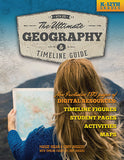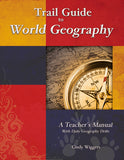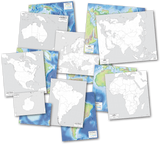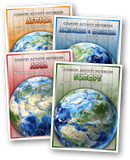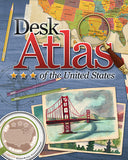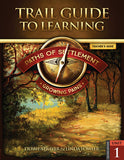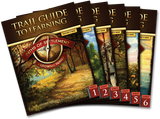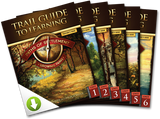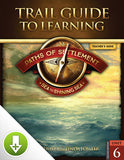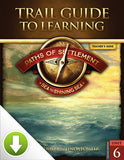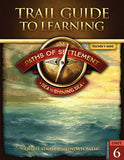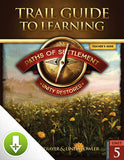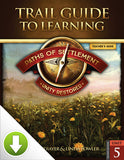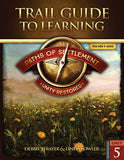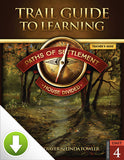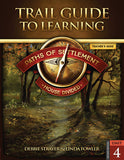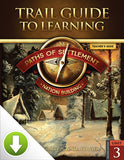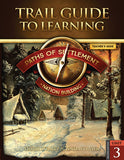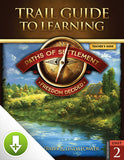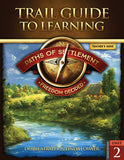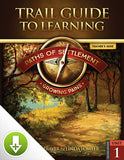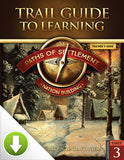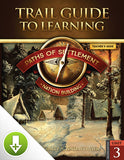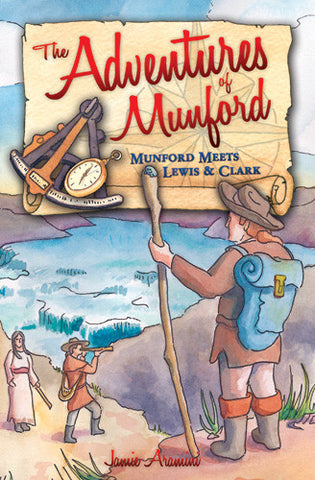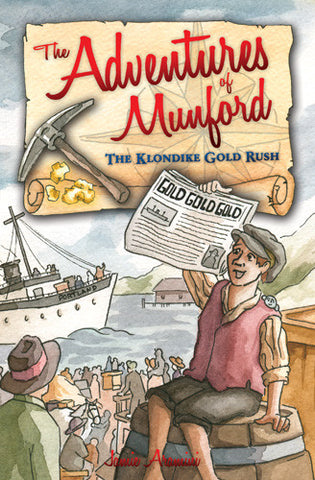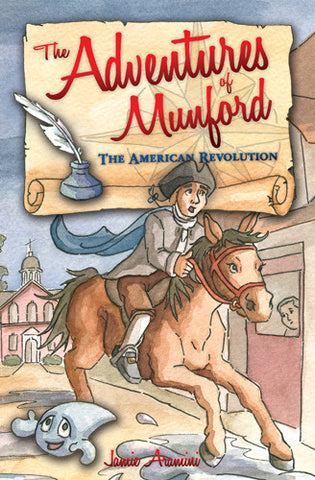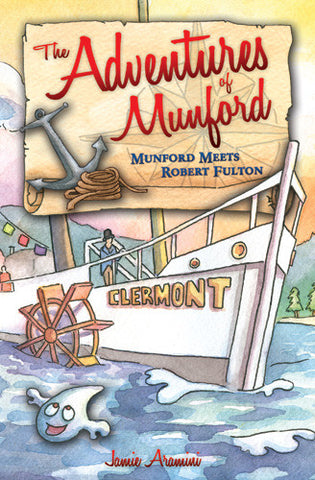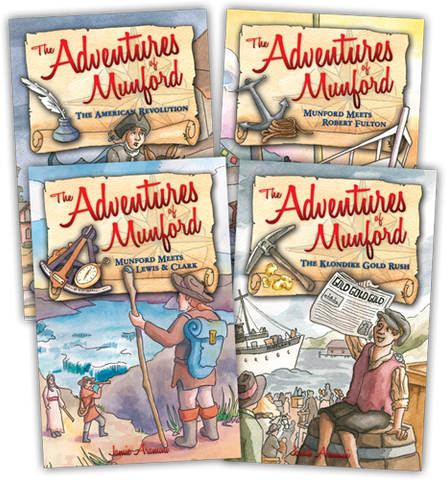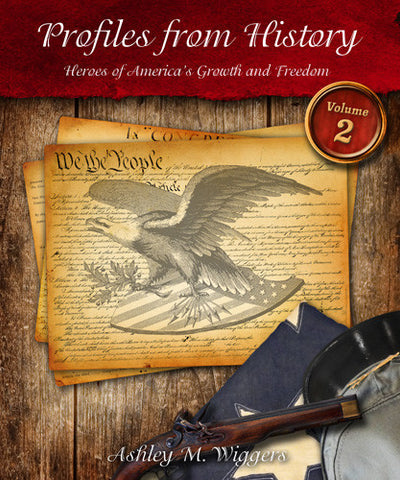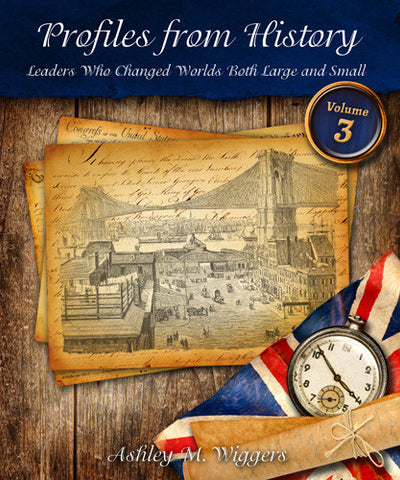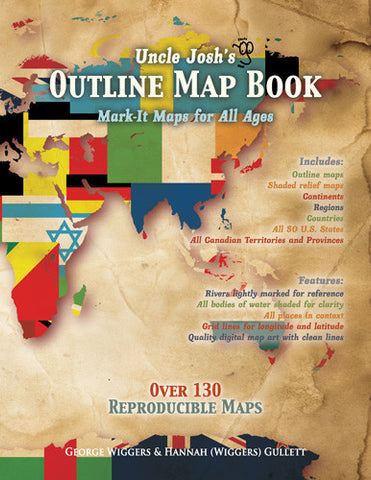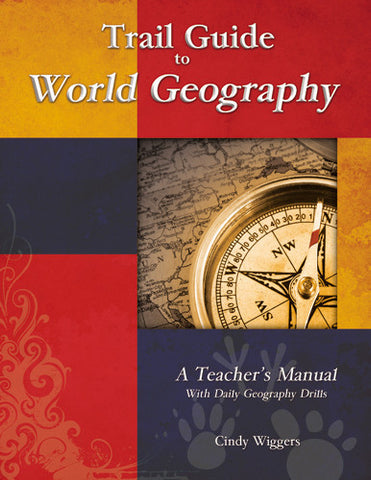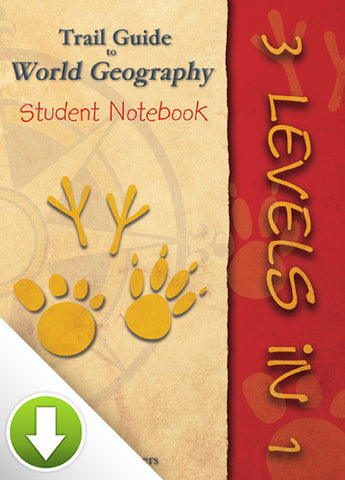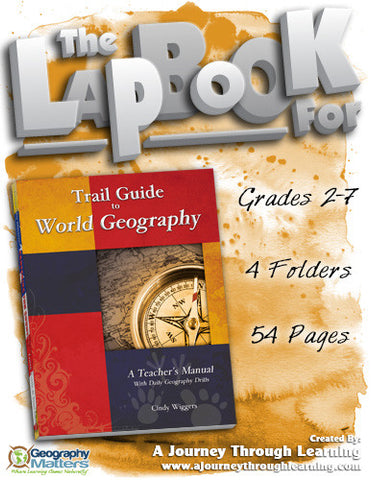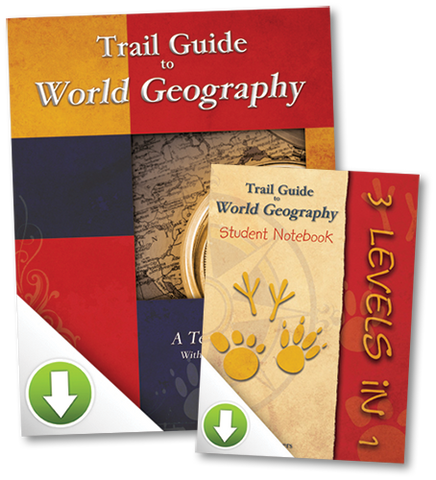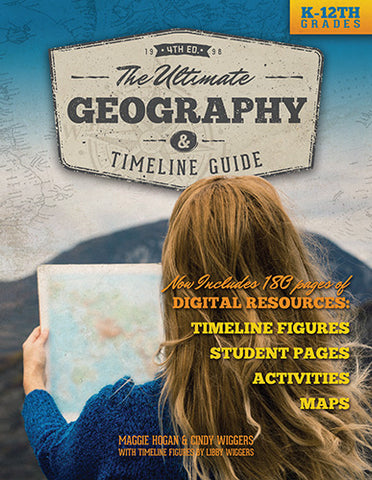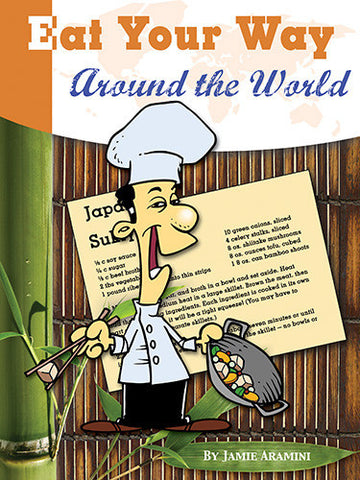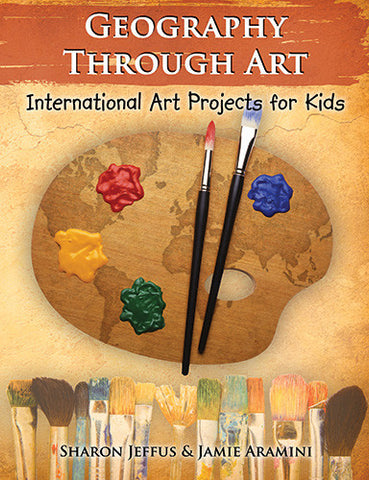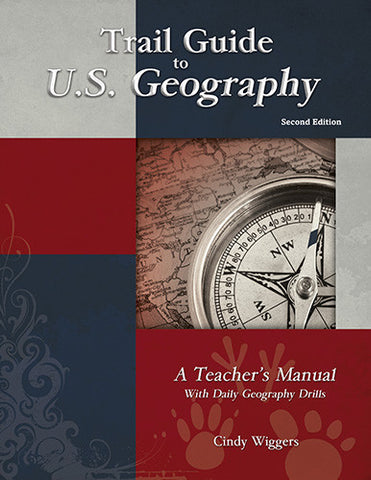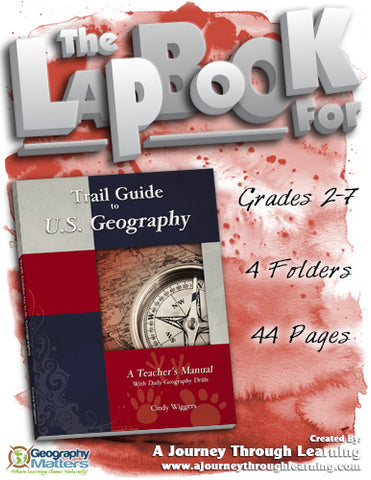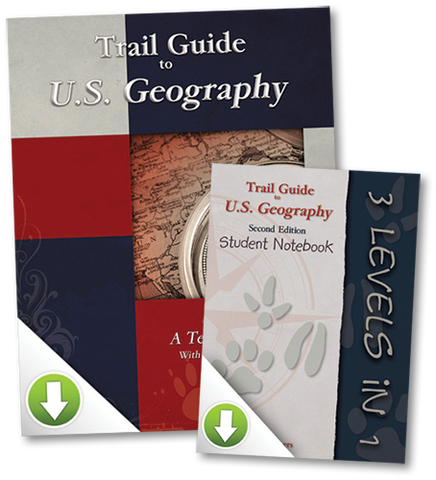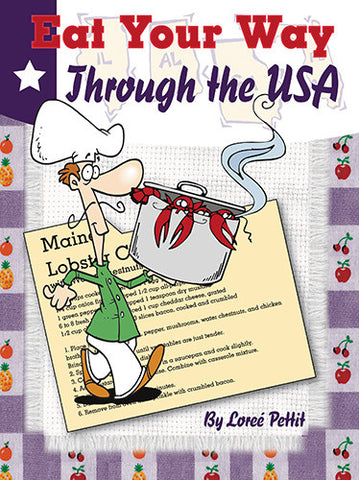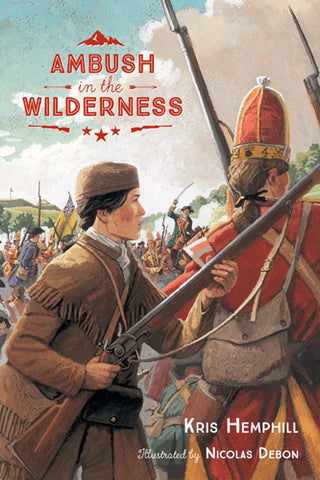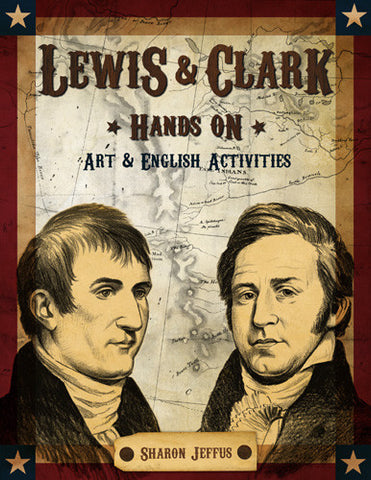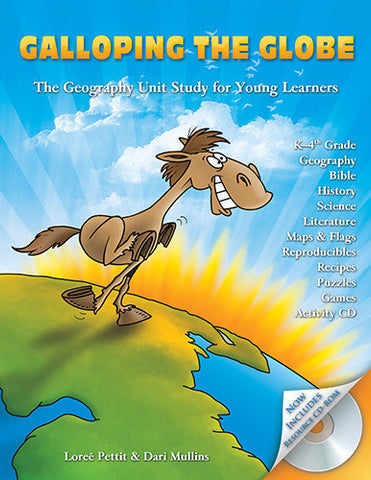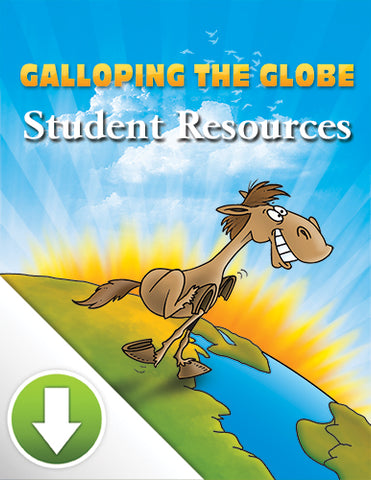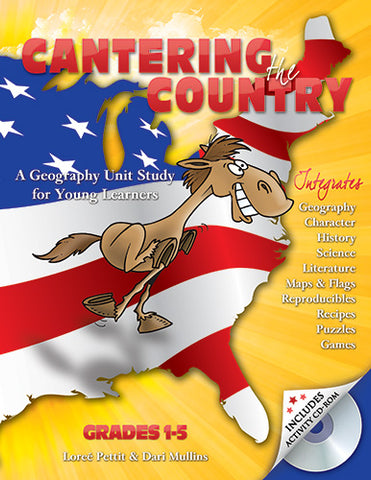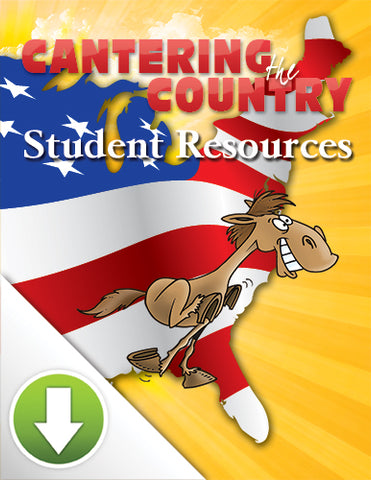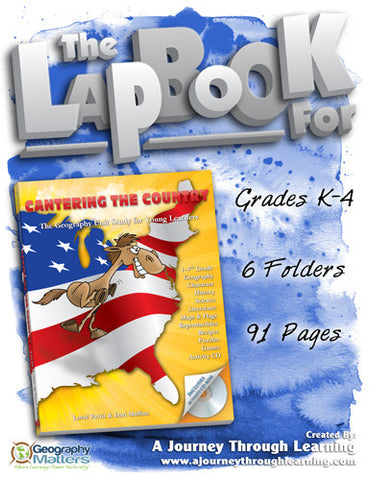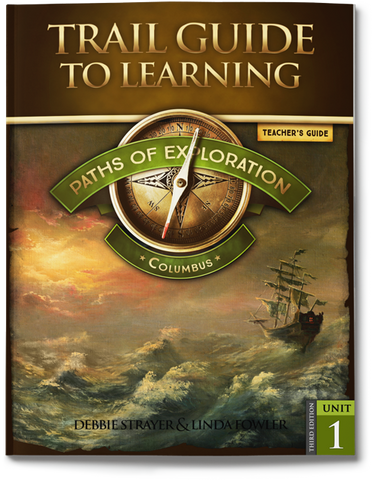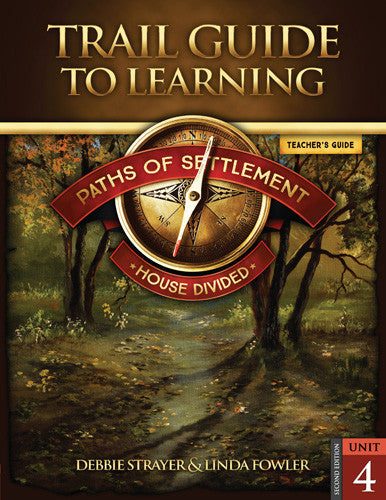
Paths of Settlement 2nd Edition - Teacher Guides
by Debbie Strayer & Linda Fowler
Paths of Settlement is the second step on the Trail Guide to Learning. Key events studied include the Colonial Period, the Revolutionary War, the war of 1812, the Civil War, and Westward Expansion. Learn about the accomplishments of great Americans such as George Washington and Patrick Henry who built upon the trial blazed by brave explorers. Their actions teach us the principles of freedom and citizenship - founding and expanding our country, strengthening us in times of war and binding us together in times of struggle. This full one-year course is targeted for grades 4-6, but the lessons can be easily adapted for 3rd and 7th grades, as well.
Activities include period crafts, cooking, watercolor painting, state studies, making a wind gauge, and more.
The second edition is a fully revamped version with improvements, updated games, and some color pages. It includes six books corresponding to each of the six units. Each book includes a section of color and perforated pages with activities, instructions, and game cards in the back. Student pages are available separately in your choice of printed pages by unit and grade, or all grades in digital format.
Required student notebook pages are available for each grade level and are an integral part of this curriculum. Notebook pages provide maps, charts, space for copywork or dictation and any other template page needed throughout the year. Student Notebooks are not included with the teachers guides, but you can order them here. Buy five units and get the sixth free when you order student pages for all six units together.
Digital downloads of all three levels (4th, 5th, and 6th grades) of the Student Notebooks are included with the Complete Package and with each individual Unit Package.
Extensions provide additional assignments and activities for the age groups below. They do not stand alone, but are meant to be used alongside the main Teacher’s Guide. Ideal for use when there is at least one other child in the family in the target range (4th -6th).
Below, you will find a summary of each unit and a list of the resources included in each package. Core Resources are used throughout the year in nearly every unit.
Core Resources are used throughout the year in nearly every unit.
- Weather of North America
- Explorer's Guide to Rocks and Minerals
- Wee Sing America CD and Songbook
-
United States History Atlas
- Desk Atlas of the United States
- Eat Your Way Through the USA
- Profiles from History, Volume 2
- Watercolor for Young Artists
- State Notebook with Stickers
- Discovering America’s Founders Drive Thru History DVD
- USA Activity CD
- Rock Study Kit
- U.S. Presidents Flash Cards
- USA PlaceMap
- Large Outline Map of the U.S.
- Mark-It Timeline of History
No one could say that life in colonial America was easy, yet shipload after shipload of newcomers from all over Europe arrived daily, each person filled with dreams of a better future. Against the backdrop of the French and Indian War, our literature provides glimpses into everyday life and adventure in the colonies. As we explore common values and behaviors of the time through George Washington’s writings, alongside compelling issues like indentured servitude and cultural differences, students are challenged to discuss and apply concepts within the framework of family ideals. At the same time, since successful colonies were so closely linked to an area’s normal conditions, study of the atmosphere, climate, soil, and weather follows naturally. Building further on the settlement theme, research and mapping states in the New England and Mid-Atlantic regions is enhanced by learning about igneous rocks, and the fun of regional cooking, great games and hands-on activities!
ResourcesIn addition to the core resources, the Growing Pains unit uses the following materials:
- Growing Pains teacher manual
- Growing Pains Student Notebook pages (three grade levels in downloadable .pdf format)
- Abigail Adams
- Ambush in the Wilderness
- The Courage of Sarah Noble
- The Matchlock Gun
Wars are very expensive to fight, and by the end of the French and Indian War King George needed money. But when the British king decided that citizens in America should provide that additional cash, it sparked a lot of anger. So much anger that it eventually led Britain into yet another war—this time with its own colonies! While learning about events surrounding the Revolutionary War, students are challenged to copy and understand the Declaration of Independence and portions of the Constitution. Literature transports us back to this exciting time through the eyes of George Washington, a 12-year old boy, some young patriot soldiers, and an adventurous water molecule. Of course, getting to know this little molecule leads directly to an investigation of atoms, molecules, water, clouds, and storms. State research and mapping continue through most of the Southern region, along with study of the seasons and rock cycle—all topped off with regional cooking and period songs, games, and activities!
ResourcesIn addition to the core resources, the Freedom Decided unit uses the following materials:
- Freedom Decided teacher manual
- Freedom Decided Student Notebook pages (three grade levels in downloadable .pdf format)
- The American Revolution (Munford Adventure)
- Guns for General Washington
- George Washington
- The Eve of Revolution
Things were finally settling into routine for the young USA. Then, less than 30 years after winning independence, conflict with Britain erupted once again in the War of 1812. But despite that, settlers didn’t give up their hopes and dreams, and pushed ever westward away from the Atlantic coast. Looking back at this huge ocean leads to an exploration of salt water, continents, waves, tides, and sedimentary rocks—as well as unseen things like underwater mountain ranges and volcanoes. Great literature immerses readers in this important time of war, building, and expansion. As students copy verses from “The Star Spangled Banner,” they’re challenged to reflect on its rich imagery and outline its rhyme patterns. Along with continued research and mapping of the Southern and Midwest state regions, a study of Presidents begins in this unit. And as always, regional cooking and period songs, games, and activities add depth and focus to an exciting time in America’s history!
ResourcesIn addition to the core resources, the Nation Building unit uses the following materials:
- Nation Building teacher manual
- Nation Building Student Notebook pages (three grade levels in downloadable .pdf format)
- The Cabin Faced West
- Justin Morgan Had a Horse
- Francis Scott Key
Fast forward through almost 50 years of mostly peaceful expansion and settlement, to the 1860s. That was when tensions between the North and South finally boiled over and ignited the Civil War, also called the War Between the States. This unit’s literature introduces Clara Barton, founder of the Red Cross, and opens windows into the lives of both ordinary families and great leaders on opposing sides. Students are challenged to think about, compare, and contrast the different points of view at the heart of this epic struggle. Even greater insight is gained from copying and discussing portions of speeches by Abraham Lincoln. Since state research and mapping are centered on the Midwest and Rocky Mountain regions, the way is prepared to examine things like weather forecasting, air masses, wind systems, severe storms, and metamorphic rocks. Study of our Presidents continues, along with the fun of regional cooking and period songs, games and projects.
ResourcesIn addition to the core resources, the House Divided unit uses the following materials:
- House Divided teacher manual
- House Divided Student Notebook pages (three grade levels in downloadable .pdf format)
- Robert E. Lee
- Abraham Lincoln
- Clara Barton
- Yankee Blue or Rebel Gray?
Following the Civil War, the United States entered a difficult period of rebuilding those things and places that had been destroyed. But restoring trust and healing to our deeply wounded nation were slow to happen. Through their reading, students experience pioneer life, follow the adventures of a newly freed slave, and meet Samuel Francis Smith, author of “America.” While copying this favorite patriotic song, they explore its themes, imagery, and rhyme patterns. Investigation of the Presidents continues, and research and mapping of the Southwest and Pacific Coast regions complete this year’s state study. Because of a newly realized need for standardized time, and the unusual features of the west, students are introduced to things like climate and time zones, continental plates, earthquakes, volcanoes, and crystals. Regional cooking, along with period songs, games and activities once again work together to unify the various topics of this action-packed time in our history.
ResourcesIn addition to the core resources, the Unity Restored unit uses the following materials:
- Unity Restored teacher manual
- Unity Restored Student Notebook pages (three grade levels in downloadable .pdf format)
- Laura Ingalls Wilder, Young Pioneer
- Janie’s Freedom
- Samuel Francis Smith
- Good Ol’ Cowboy Stories NOW OUT OF PRINT. The complete package and Unit 5 package no longer include this book. You may be able to find one used, ISBN: 9780736916257. When we find a suitable substitute it will be included and replacement text will be found on the Updates page linked at the bottom of the website page.
Sea to Shining Sea focuses largely on revisiting the previous five units with reviews of the Steps for Thinking, Spelling, Vocabulary, Editing, History, Science, and States sections. Unit literature plunges us into the midst of the Klondike Gold Rush, and introduces students to our 26th President, Theodore Roosevelt. Along with exploring the history of political parties in the United States, they are once again challenged to discuss themes, identify rhyme patterns, and illustrate imagery in verses copied from “America the Beautiful.” Plus, as a culminating activity, students research, design, and create their own home-state projects. This, along with the fun of cooking, painting, period songs, and projects completes the year-long study in Paths of Settlement!
ResourcesIn addition to the core resources, the Sea to Shining Sea unit uses the following materials:
- Sea to Shining Sea teacher manual
- Sea to Shining Sea Student Notebook pages (three grade levels in downloadable .pdf format)
- The Klondike Gold Rush (Munford Adventure)
- Theodore Roosevelt
Check out our convenient Paths of Settlement 2nd Edition Packages for significant savings. (Save both your time and money!)
If you have landed on this page and haven’t yet learned much about the Trail Guide to Learning curriculum series, we recommend you read the intro to Trail Guide to Learning. Then come back to see what Paths of Settlement is all about!
"If you think POE is great, just wait until you get to POS... even better!"
—J. Rugh, from the Trail Guide to Learning Facebook Page
- Instructions and Sample Lesson, first week of Unit 1: Growing Pains
- Lessons At A Glance, sample planning charts for the first three weeks of Unit 1: Growing Pains
- Tables of Contents for all units
- Skills Charts for each unit according to grade levels and topics studied
- Student Notebook Pages: 4th Grade Sample, first week of Unit 1: Growing Pains
- Student Notebook Pages: 5th Grade Sample, first week of Unit 1: Growing Pains
- Student Notebook Pages: 6th Grade Sample, first week of Unit 1: Growing Pains
- Resources ISBN list
- Trail Guide to Learning Series brochure, a complete 16-page brochure of the philosophy, presentations, and details of all three path levels of the curriculum
| Publisher: | Geography Matters |
| ISBN: | |
| Edition: | Second Edition, 2017 |
| Product: | |
| Format: | Various |
What improvements and updates were made for this edition?
The Second Edition of Settlement is in six, soft-back books. Each book contains one unit which provides six weeks of lessons. You can purchase the curriculum one unit at a time or save $45 when buying them all at once. Each book is redesigned with a new look and includes full-color game cards with perforated edges for convenient use. You will also find the Lesson at a Glance pages (available for viewing under the “Samples” tab) placed in the back of each unit with perforated edges so that parents can easily check off assignments as they go and keep a log of completed work.
For what grade levels was this curriculum written?
Fourth, Fifth, and Sixth
Can you adapt this program for older students if so, how?
You can use the Enrichment Activities included in the sourcebook to make it appropriate for a seventh grader. In addition to that, take them to the library and get whatever books you can find, or use the internet to find as much as they can on the unit topic (Revolutionary War, Civil War, etc.) and as they read their resources, have them compare (tell what is the same as our resources) and contrast (tell what is different from our resources). This is a good critical thinking idea. Another quicker and easier way to do this is to find videos on each topic that you think are appropriate and then compare/contrast them with what our resources have to say about these folks. Encourage your older students to share the information they find out with you. This is a good thinking/presenting skill, as well as a way to develop summarizing ability.
A Middle School Supplement is also available to provide guidance for older students. Content follows along with the sourcebook but at a higher, more challenging level. It includes higher level literature books, writing assignments, activities, and thinking skill points. Connect all your students to the same time period and type of learning with the Trail Guide to Learning series Middle School Supplement. (Available in digital format.)
How many levels are used to teach American history?
We teach American History using a three-year program. Here is a summary of the three Paths.
Paths of Exploration — (Grades 3-5) The character and experiences of explorers who shaped us as a nation with their vision, determination, bravery and sacrifice. They blazed a trail for others to follow. The focus here is on the type of thinking, leadership and skills that were needed to open up the way for others to follow. Primary science focus involves acquiring the basic skills of observation and recording (both drawing and writing), beginning life science through studying the animals and plant life of explored areas, including habitats and the relationship of these factors to the explorers. Some key figures studied: Columbus, the Jamestown settlers, the Pilgrims, Daniel Boone and Lewis and Clark.
Paths of Settlement — (Grades 4- 6) The settling of our nation is examined through the lives of leaders who made a difference by standing for their beliefs and making a way for us as a nation to follow and grow. Key events studied - the Colonial Period, the Revolutionary War, the War of 1812, the Civil War and Westward Expansion. What does it take to build a nation? Blazing a trail was the first step, building a foundation for growth and government is next. Primary science focus - Earth Science (geology, weather, land forms, climate) and the impact of these factors on settlement. Basic economics and international relationships are also addressed. Some key figures studied include George Washington, Paul Revere, Abigail Adams, Francis Scott Key, Clara Barton, Robert E. Lee, and Abraham Lincoln.
Paths of Progress — (Grades 5-7) To grow as a country, another group of leaders had to step forward during our history - scientists and inventors. They used their talents and abilities to answer questions that provided better ways of living and working. The lives of these devoted individuals and their contributions will be examined throughout our history, into the Industrial Revolution and the beginning of the 20th century. Primary science focus — physical science (such as energy, motion, atoms and molecules) and the geographic and economic impact of each development. Some key figures studied: Ben Franklin, Samuel Morse, George Washington Carver, the Wright Brothers, and Thomas Edison.
What are the resources necessary to complete Paths of Settlement? Are they included, or do they need to be purchased separately?
Students will need the readers, read-aloud books, and a number of other reference materials and activity books. Every item is available separately or packaged in discounted sets.
The Settlement Complete Package includes the six curriculum teacher manuals, all resources listed on the product description page, and digital downloads of the student notebook pages.
Printed, ready-to-use, student notebook pages are available by grade and by unit. Buy 5 and get the 6th free when you order all 6 units together.
See the product description for a complete list of the Core and Unit Resources.
There are six units in Settlement. How long does it take to do each unit?
The second year of the Trail Guide to Learning series, Paths of Settlement, contains 36 lessons (each designed to take 5 days to complete) in 6 units, as follows:
Growing Pains — 6 weeks
Freedom Decided — 6 weeks
Nation Building — 6 weeks
House Divided — 6 weeks
Unity Restored — 6 weeks
Sea to Shining Sea — 6 weeks
Does Paths of Settlement use timelines?
Timeline activities are part of the Profiles from History, Volume 2 resource book.

